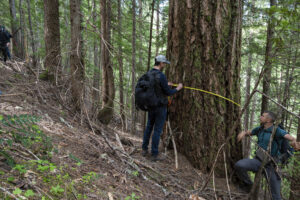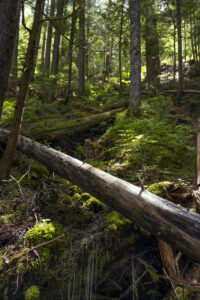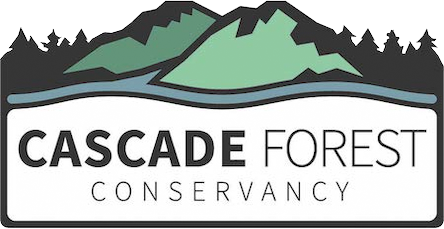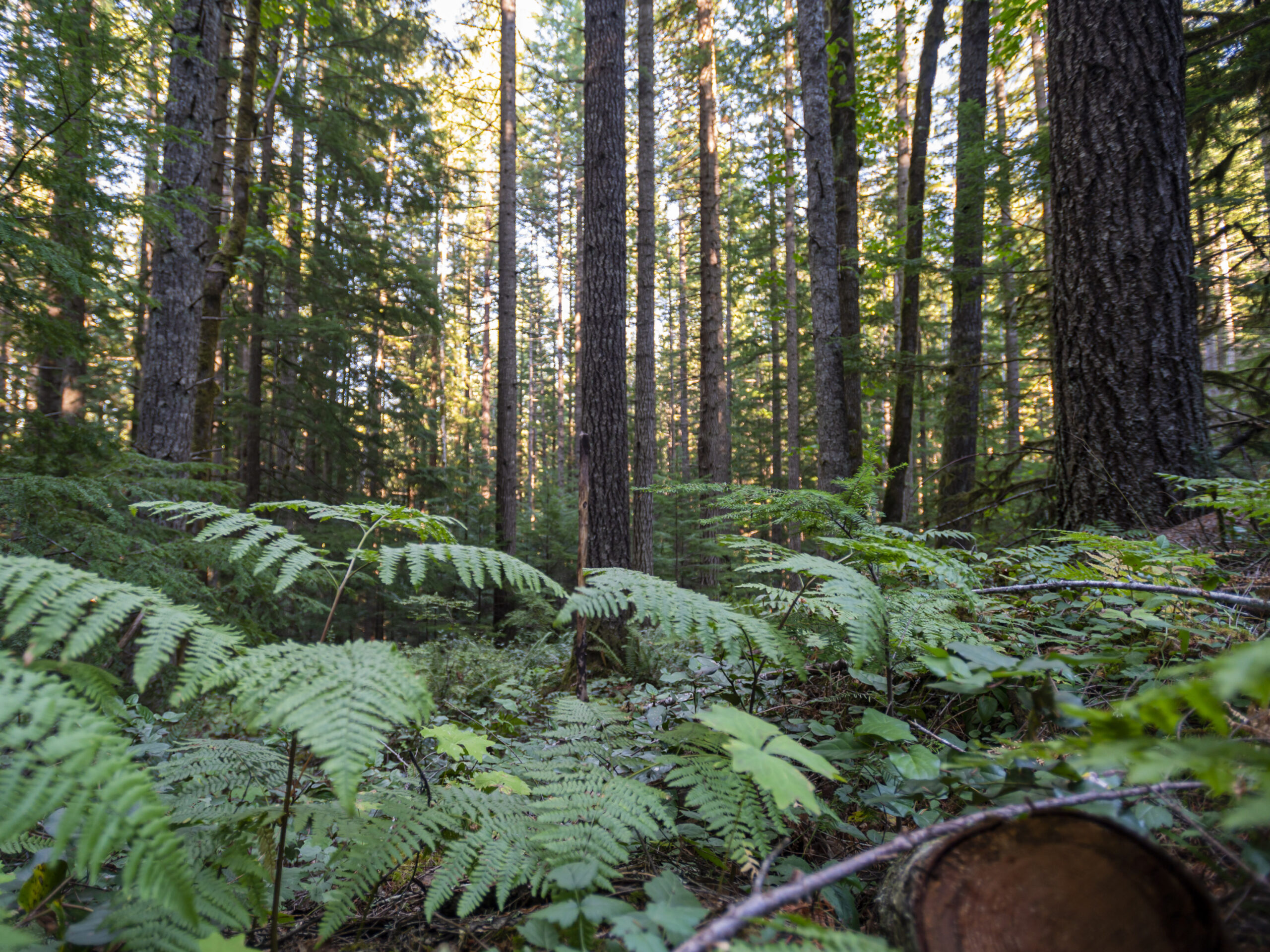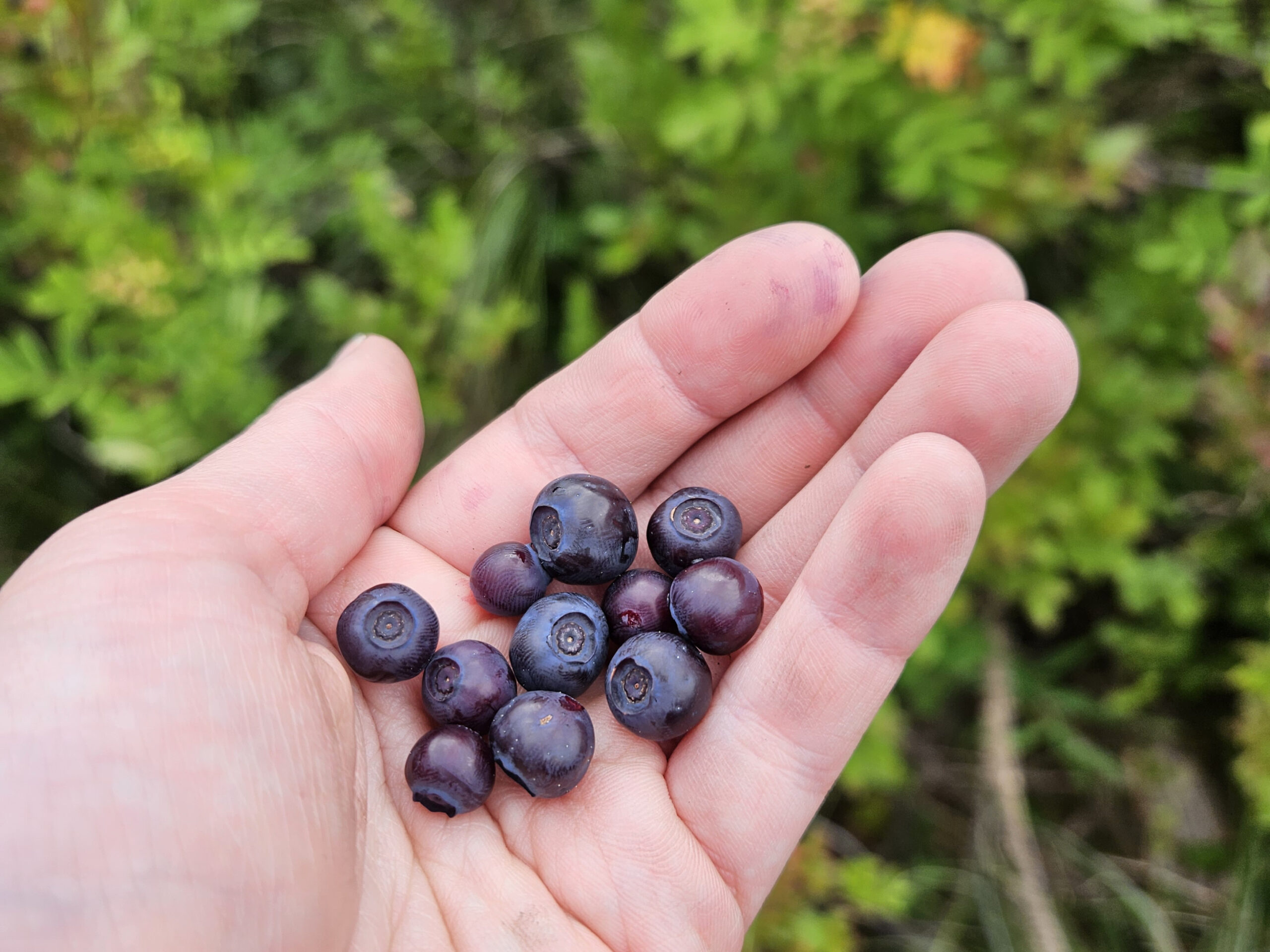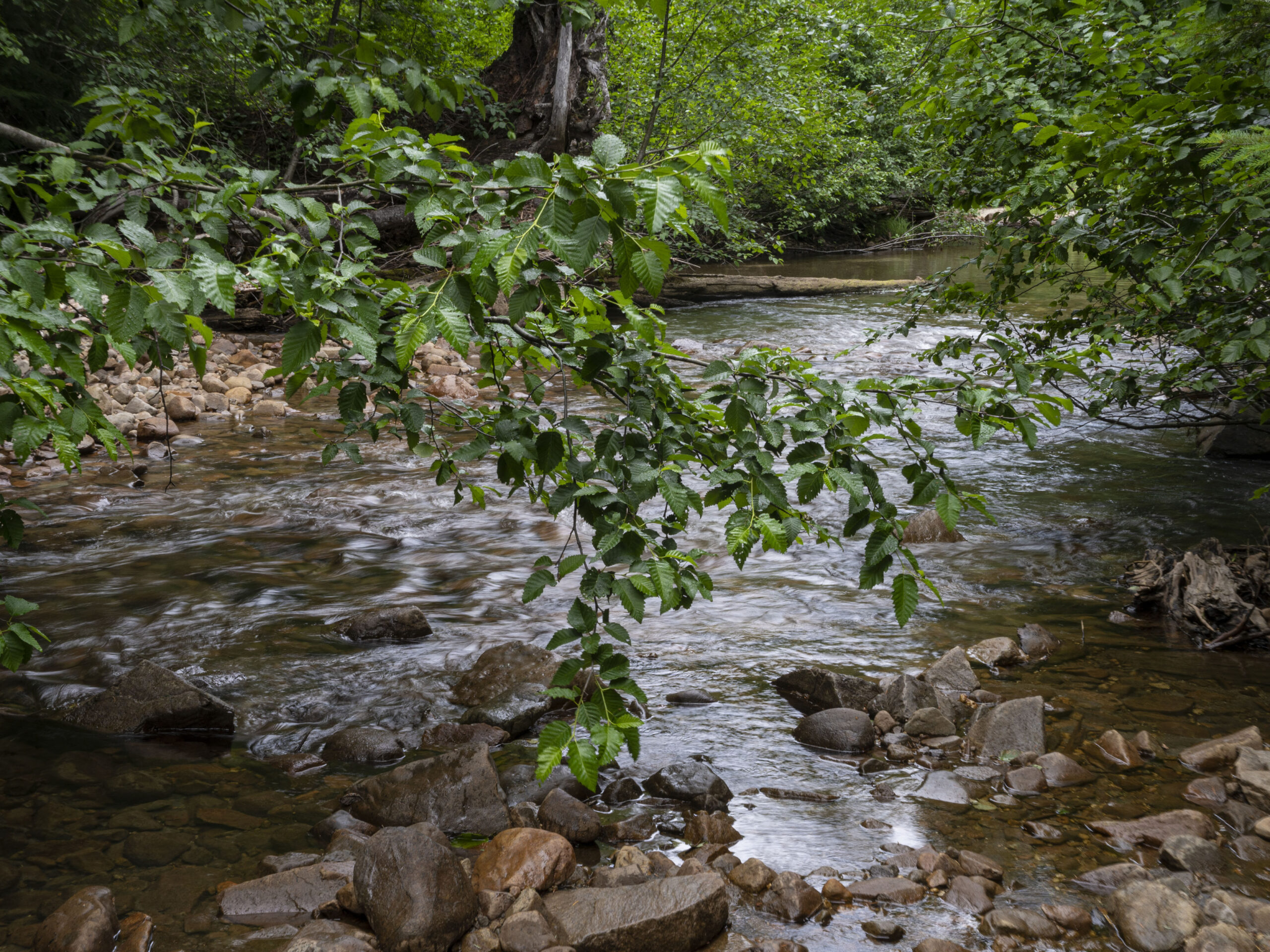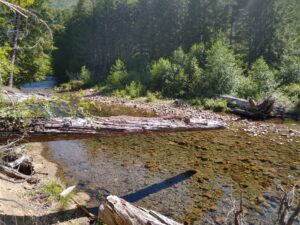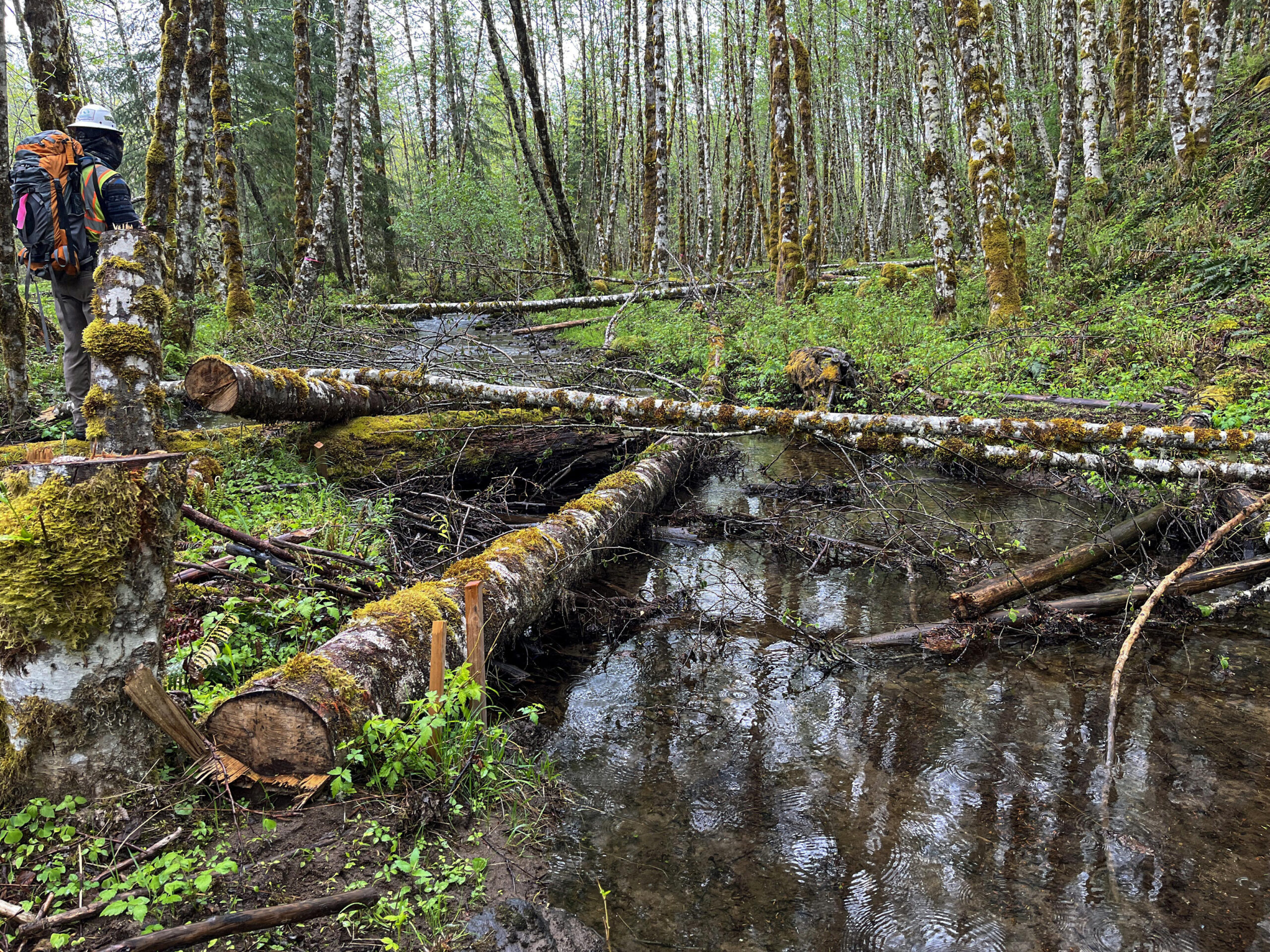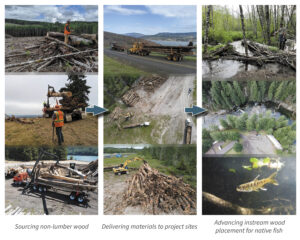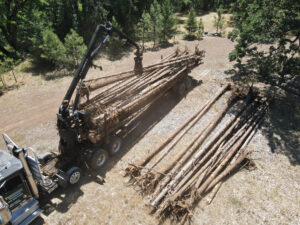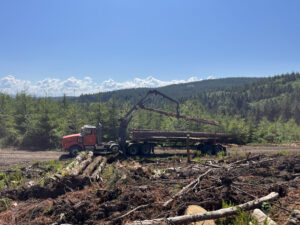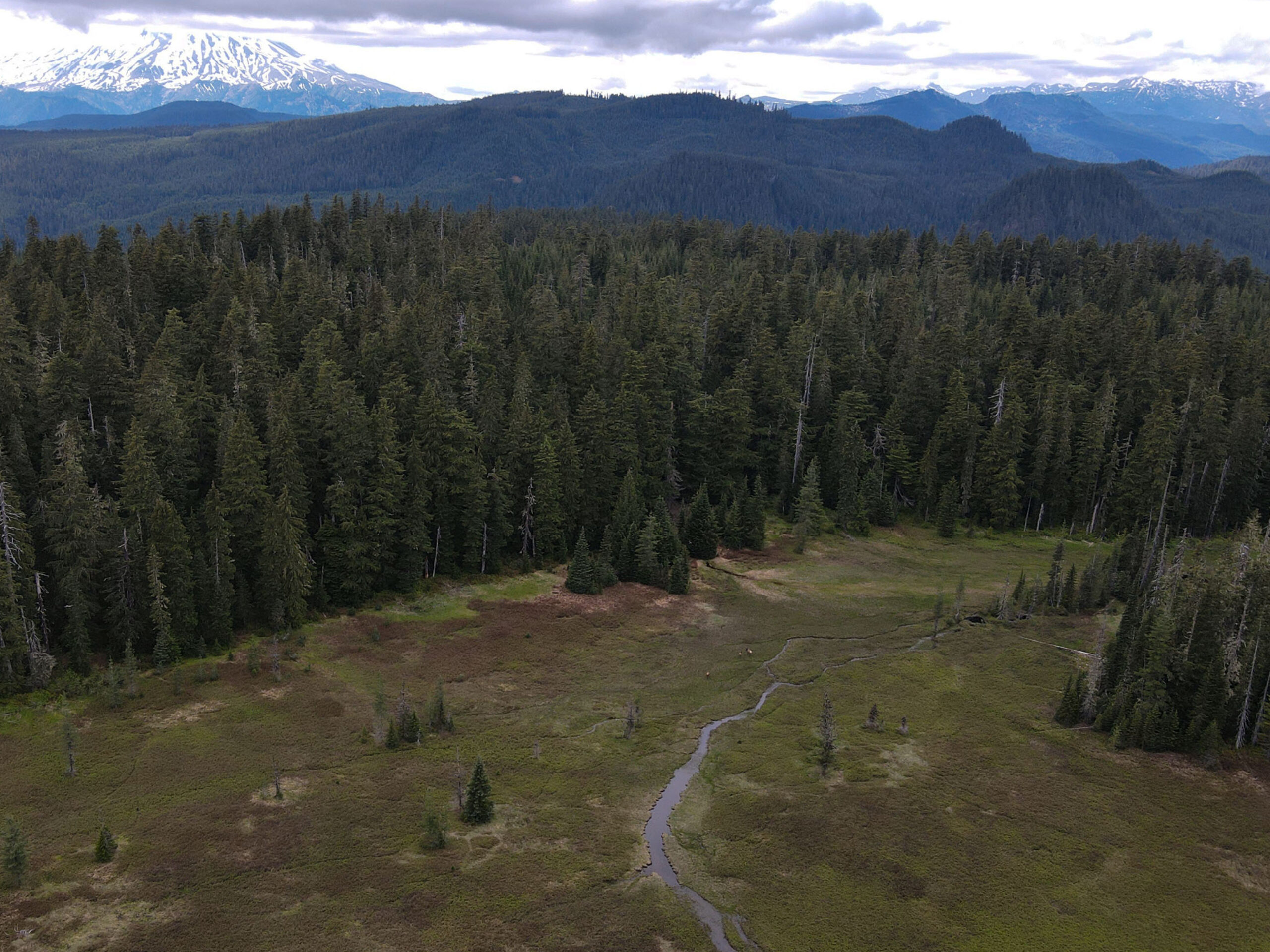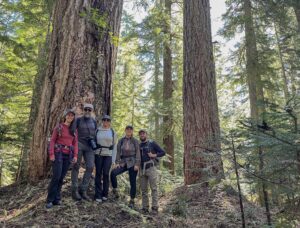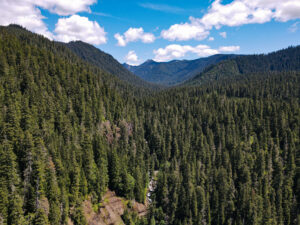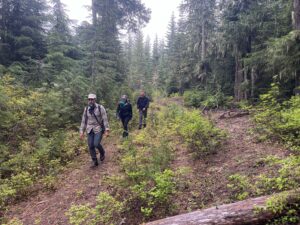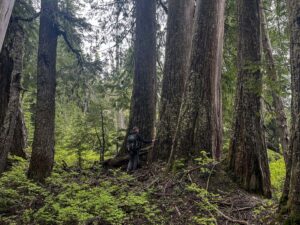I recently joined Cascade Forest Conservancy staff and volunteers in the field to survey big huckleberry fields in the Gifford Pinchot National Forest. Huckleberries are an important (and delicious!) source of nourishment for many species in the Pacific Northwest–including us humans. However, huckleberry production levels today are well below historic numbers.
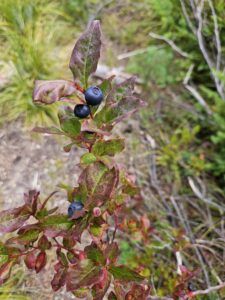
Like most fruit-producing species, big huckleberry (Vaccinium membranaceum) fruit production is heavily influenced by the amount of sun a plant receives. Because the plant’s foliage is naturally resilient to low-intensity fires, Indigenous peoples in the Pacific Northwest set fires to clear and maintain huckleberry fields and maximize fruit production for centuries until their lands were taken and the US government adopted a policy of aggressive fire suppression.
The fire suppression policies that began more than a century ago have allowed conifers and other species to encroach on what were once carefully maintained and incredibly productive huckleberry fields that had sustained people and animals for generations. But in the past couple of decades, there has been a growing interest in restoring some historic huckleberry picking sites–including areas in Washington’s Gifford Pinchot National Forest.
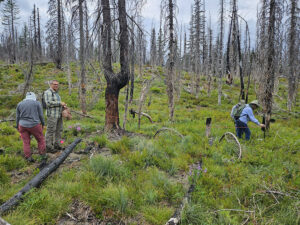
Between 2010 and 2016, the U.S. Forest Service worked with the Cowlitz Indian Tribe and other stakeholders to perform thinning activities designed to benefit huckleberries and CFC was tasked with monitoring the forest stands post-harvest to assess how effective these efforts have been in enhancing huckleberry.
To execute these surveys, CFC has enlisted volunteers since 2017 to collect data throughout the previously harvested forest stands to collect hundreds of data points. This year’s trip was a follow-up to an initial survey conducted at the Sawtooth Berry Fields in 2017 and 2018. The berry fields are just north of Indian Heaven Wilderness and are regarded as one of the most productive berry fields in the Pacific Northwest. To conduct the surveys, we started with a map of plot locations and a kit that included an iPad for collecting data, a rope to ‘draw’ the plot, a stake to mark the plot, a densitometer (a tool to measure canopy density), and a few other nifty gadgets.
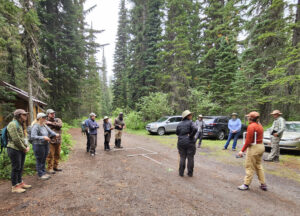
After an overview of the project and a tutorial on how to do the surveys, we had to figure out who should do what job. I felt prepared, but also stressed since I was leading the group. The past few days I had practiced doing each job, but now it was time to put it into action. Learning how to use a compass was, interestingly enough, no easy feat. Still, I felt nervous because I wanted to ensure our group collected all the data we needed, without becoming a ‘dictator of the plot,’ so to speak.
Soon, we fell into a routine where we each had our designated jobs and could rely on each other. If I was tired, someone would trade jobs with me so I could rest, and vice versa. One of my favorite areas we visited was a mossy grove, with golden sunlight streaming through. If only I could catch that sunlight, bottle it up, and create… gold. No, not even gold shines like that. Purple lupine leaves gathered water and sparkled like otherworldly jewels. The leaves of one tree seemed to reflect the sunlight and created jade and emerald-like leaves. I smiled, realizing with these jewels, I must be one of the richest people in the world.
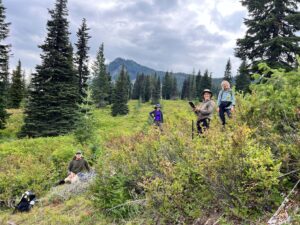
Our next plot had the most delicious and red wild strawberries anyone could imagine. I couldn’t resist picking a few. Gabe asked if I got the densitometer reading, but he mixed up the word, calling it an appendectomer. I smile and take the reading as Gabe asks what it’s called again. “A densitometer,” I say, pronouncing the word.
We all offered up a collective sigh of relief as we finished what would be the last plot. Tired but satisfied with our work, we walked along the road, stopping to eat huckleberries on the way. A truck passed us with kids riding in the back who smiled and waved at me. I waved back, wondering why they thought they knew me. Well, maybe they don’t have to know how to wave. Maybe it’s enough we’re all out here to search for huckleberries.
The next day was damp and misty, giving the forest an almost ethereal mystery. We trekked through a new project site, and by late afternoon, we finished our final plots. After two days of conducting huckleberry surveys, we could find north at the drop of a hat, establish the plot with the rope in no time, and whip out the iPad to collect data like no one’s business. We were a certified team and an efficient one at that. The feeling of accomplishment was palpable, and I think we all could agree that it was a successful two days (and one night) in the field! Our great volunteers and staff make this kind of great work possible, and it made me feel so proud to be able to become a part of the cause.
